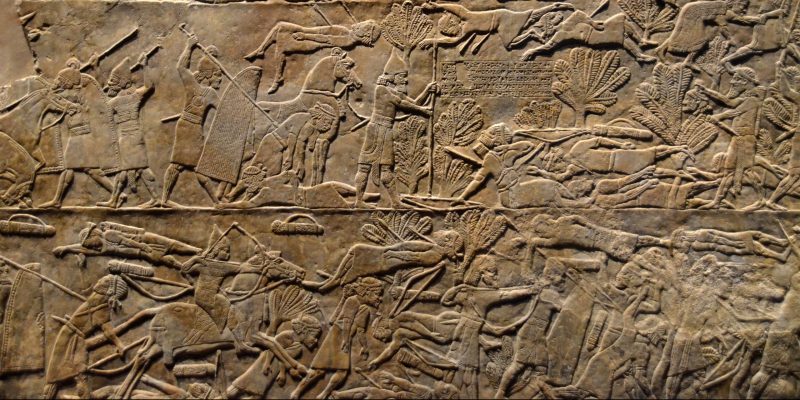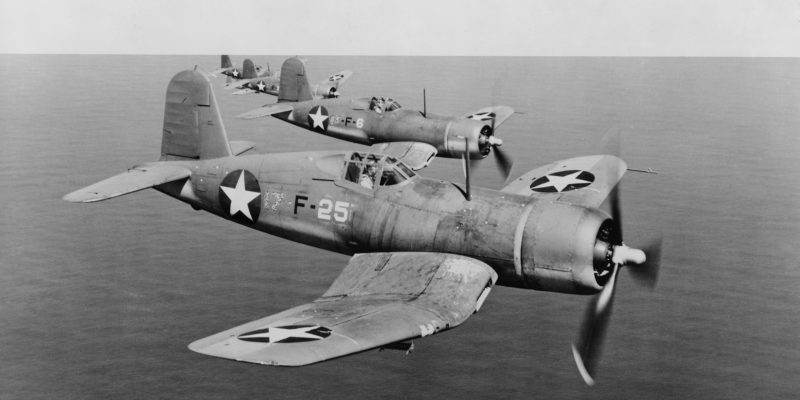We explain what war is and what its causes are. Also, the types of war and world wars.

What is war?
War is a armed conflict between two or more human groups that use tactics, strategies and technology in order to impose themselves through the use of force over the adversary. It is the most extreme form of conflict that can occur between two or more States, communities or political factions, as it involves the mobilization of troops and weapons and the mutual exchange of acts of violence.
War has been part of human relationships since the beginning of civilization, and there is even evidence of violent conflicts between communities since prehistory. Many political changes, economic systems, processes of miscegenation and technological advances were a consequence of wars. These, in turn, cause deaths, displacement of populations and material destruction. In the 20th century, the use of industrial technology in armed conflicts caused the devastation of entire cities and the death of millions of combatants and civilians. Furthermore, wars were the context in which some genocides were perpetrated.
The characteristics of wars changed throughout history, as well as the rules that regulate their operation and military behavior. Currently, various standards are considered in force, such as those included international humanitarian law, which attempts to limit the effects of wars by regulating the conduct of combatants, protecting civilians, and prohibiting certain types of weapons. Wars also tend to vary depending on the origin of the combatants, as they can be professional soldiers, recruited civilians, mercenaries or a combination of all of these.
However, there are those who consider that any attempt to regulate war or mitigate its effects is an unattainable ideal, since Even with the existence of international standards, rights continue to be violated and carrying out criminal acts in contexts of war. Even so, the existence of legal standards makes it possible to prosecute war crimes and assist victims.
The war was the subject of multiple theoretical and philosophical reflections. According to Carl von Clausewitz (1780-1831), a Prussian soldier who wrote the book of war (published in 1832), “war is the continuation of politics by other means”, that is, it does not have its own logic but is an instrument of politics. On the other hand, The art of wara treatise from the 5th century BC. C. attributed to the Chinese thinker Sun Tzu, contains very influential statements in contemporary military strategy, such as: “A good strategist defeats the enemy army without fighting.”
Key points
- War is an armed conflict between two or more human groups, which use tactics and technology to impose themselves by force on the adversary.
- From its origins to the present, it caused political changes, technological advances and human and material losses.
- The causes of wars can be territorial, economic, political, religious, ideological or ethnic.
- There are different types of war, for example: conventional, civil, guerrilla, total, nuclear, religious, hybrid and subsidiary.
- To date, the most devastating wars were the two world wars of the 20th century, which caused millions of victims in just a few years.
- See also: Vietnam War
Main causes of wars

The causes of wars can vary depending on the social, political, economic and cultural context in which they occur, and according to the characteristics and interests of the actors involved. Generally, there is no single reason for the outbreak of a war.but a set of causes and motivations that come together and trigger the armed confrontation.
In prehistory, conflicts between groups could be due to fights for resources, territory, prestige, mutual distrust or tribal rivalries. In ancient times, wars were usually started for reasons of territorial expansion (that is, to take over arable land, economic resources, labor or strategic areas to access routes of exchange). This was the case in the wars of conquest waged by the Roman Republic, and then the Roman Empire, in Europe, Africa, and Asia. This motivation continued to be frequent in later times.
Many of ancient wars were also due to religious considerationsgenerally as an expression of the will of some god who offered victory to the king (for example, Amun Ra during the time of the warrior pharaohs in Ancient Egypt). In the Middle Ages, the Christian kingdoms and the Catholic Church clashed with the Muslim states, with whom they maintained deep religious and cultural confrontations. The clearest example was the Crusades, whose objective was the Christian reconquest of Jerusalem, a city considered sacred by the Jewish, Christian and Muslim religions. In the Modern Age, Catholics and Protestants also clashed in the so-called “wars of religion.”
Beginning at the end of the 18th century, the revolutionary wars and the formation of nation-states introduced two motivations: defense of national sovereignty and the desire of a population to become independent from colonial rule. The latter was characteristic of the Spanish American wars of independence, which in the 19th century severed the political link with Spain. On the other hand, the defense or aggrandizement of the nation were frequent motivations in the 19th and 20th centuries, often linked to economic interests.
Finally, many armed conflicts, especially civil and guerrilla wars, are due to the existence of two or more political factions that dispute the leadership of a nationmainly due to political, economic or ideological differences, as was the case of the Spanish civil war (1936-1939) and the armed conflict in Nicaragua before and after the triumph of the Sandinista Revolution in 1979. They may also be due to ethnic, nationalist or separatist conflicts in which different groups within a State, which identify themselves as different peoples or nations, fight for power or to separate and form their own State, as happened in the territories of the former Yugoslavia in the 1990s.
Types of war
Depending on their characteristics and the purposes of their participants, wars can be of different types:
- conventional warfare. It is a traditional conflict between two or more armies belonging to different States, which fight on battlefields with conventional weapons (that is, without chemical, biological or nuclear weapons), and which can sometimes be combined with naval and air combat. The objective is to defeat, disarm and achieve the surrender of the enemy's military forces.
- Civil war. It is an armed conflict in which two or more political, social or ethnic sides confront each other within the same country, with the aim of controlling government institutions or imposing a sociopolitical or socioeconomic model. In this case, the combatants are usually not only military, but a large part of the population is involved in the confrontation.
- guerrilla warfare. It is a conflict in which an irregular military force, which uses small-scale attack and rapid withdrawal tactics, and a regular military force, such as the armed forces or police, which sometimes resort to counterinsurgency techniques, confront each other.
- Total war. It is a conflict in which the nations involved mobilize all available resources (human and material) to confront and completely defeat the enemy. The two world wars are examples of this type of war.
- nuclear war. It is a conflict that is based on the development and use of nuclear weapons of mass destruction. It is a concept that emerged in the mid-20th century, after the dropping of two American atomic bombs on Japanese soil in 1945. Throughout the Cold War, the possibility of nuclear war proved to be a danger to all of humanity and the planet. , since atomic bombs could destroy entire cities and regions and trigger high levels of radiation exposure. For this reason, measures were taken to avoid an escalation of this type and, until now, there has never been a nuclear war.
- Holy or religious war. It is a conflict that responds mainly to religious reasons or whose participants justify their military actions in the defense of a belief system. It is usually called by a religious authority, which mobilizes soldiers or faithful who believe that their religion is the only legitimate and true one and that their adversaries are infidels.
- Hybrid warfare. It is a characteristic conflict of the 21st century, which involves multiple techniques aimed at achieving military objectives, such as the tactics of conventional war and guerrilla warfare, added to the dissemination of fake news (fake news) to demoralize the enemy or confuse public opinion and “cyber warfare”, which allows obtaining information, leaking data or hacking the enemy's computer systems.
- Subsidiary war. Also called “war by proxy” and “proxy war“, is a conflict in which two or more States, generally world powers, militarily or economically support one side or another in a war fought in another region, either between the regular forces of two countries or between rival factions within a region. country. In this way, the two powers do not confront each other directly, but rather support sectors related to their respective interests in other regions of the world. For example, the intervention of the United States and the Soviet Union in various military conflicts during the Cold War.
world wars

The world wars were war events of great magnitude, which involved dozens of countries (led by the powers of the moment) and in which few countries were able to maintain their neutrality. The effects of these wars were devastating, causing millions of deaths and injuries, as well as enormous material losses.
So far there have been two world wars, both in the 20th century: the First World War (or Great War) from 1914 to 1918 and the Second World War from 1939 to 1945. The Cold War between the United States and the Soviet Union (USSR), which lasted forty-five years (between 1947 and 1991), was a confrontation of global scope, but with the exception that the contenders never faced each other directly. but through its intervention in wars fought in other countries and its attempts to extend its political, economic and cultural influence to most of the world.
References
- Centeno, MA and Enriquez, E. (2016). War and Society. Polity Press.
- Dyer, G. (2007). War. Belacqua.
- Frankel, J. (2024). War. Encyclopedia Britannica. https://www.britannica.com/
- Keegan. J. (2014). War history. Turner.
- von Clausewitz, C. (1984). of war (original edition of 1832). Work.





